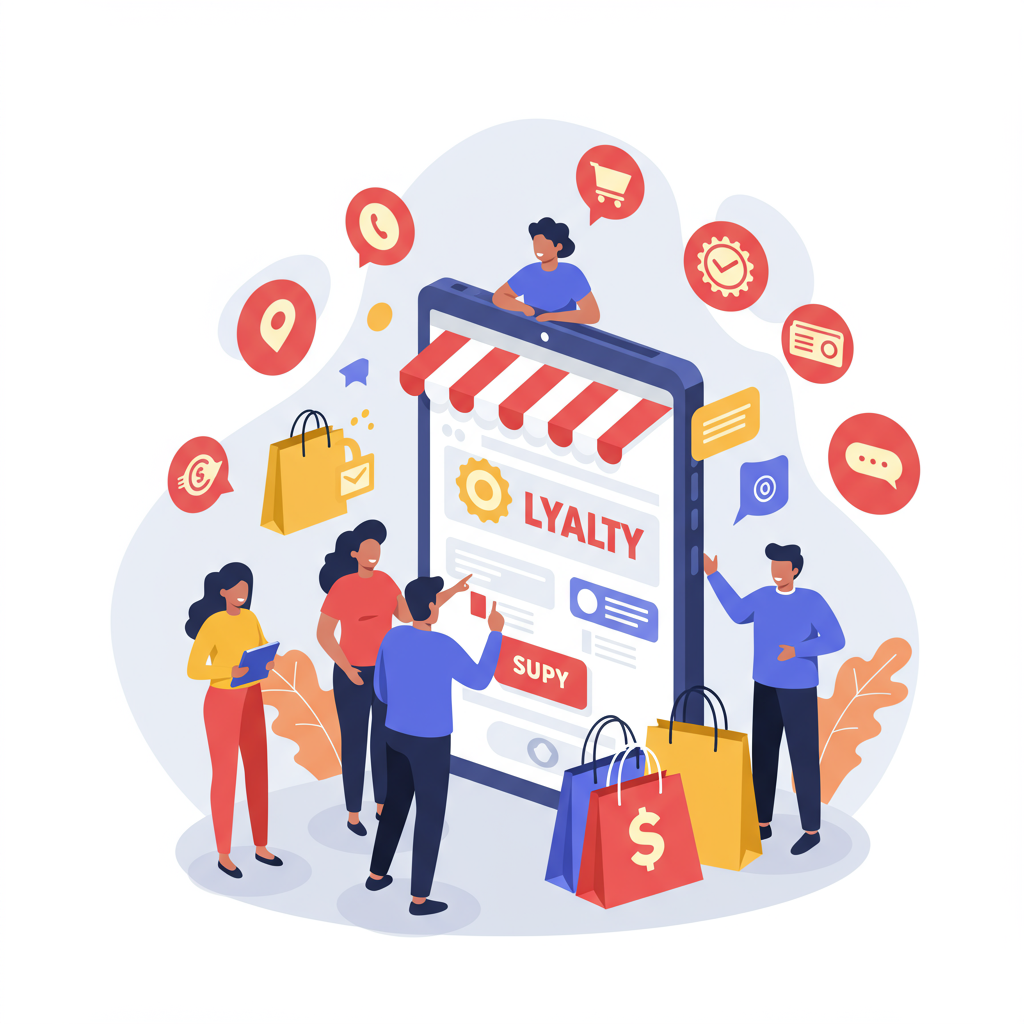My Guide to Building a Thriving Loyalty Program for E-commerce Success
As a Shopify merchant, you’re constantly looking for ways to grow your business.
You’re likely focused on attracting new customers, which is absolutely vital.
However, what if I told you that some of your biggest growth opportunities lie with the customers you already have?
That’s where a robust customer loyalty strategy comes into play.
In my experience, building strong relationships with your existing customer base is one of the most powerful investments you can make.
It’s not just about repeat purchases; it’s about fostering a community and turning one-time buyers into lifelong advocates.
Let’s dive into how you can boost your Shopify store by implementing an effective loyalty program.
First, why is loyalty so crucial in today’s competitive e-commerce landscape?
Acquiring new customers is becoming increasingly expensive. Marketing costs are rising, and customer attention spans are shrinking.
Loyal customers, on the other hand, cost less to serve and are more likely to spend more over time.
They also become your best marketing tool through word-of-mouth referrals.
I’ve seen firsthand how a well-executed loyalty program can significantly increase customer lifetime value (LTV).
It reduces churn, encourages higher average order values, and creates a predictable revenue stream.
So, what kind of loyalty programs can you implement on your Shopify store?
The most common type is a points-based system. Customers earn points for purchases, sign-ups, or social shares.
These points can then be redeemed for discounts, free products, or exclusive experiences. It’s straightforward and highly effective.
Another powerful option is a tiered loyalty program. Here, customers unlock different levels of benefits as they spend more or engage more.
Think of it like a VIP club: Bronze, Silver, Gold tiers, each offering progressively better perks. This gamifies the experience and encourages progression.
Some brands even implement paid loyalty programs, where customers pay a fee for exclusive benefits like free shipping or early access to sales.
This model works well for brands with a very dedicated customer base.
Finally, there are value-based or community loyalty programs, which focus on shared values or charitable contributions.
Customers might earn points that can be donated to a cause, or gain access to exclusive community events.
Regardless of the type you choose, certain elements are key to a successful loyalty program.
It must be easy to understand. If customers can’t grasp how to earn or redeem rewards, they won’t participate.
The rewards themselves must be valuable and desirable to your target audience. Generic discounts might not always cut it.
Personalization is also paramount. Use customer data to offer relevant rewards and communicate in a way that resonates with them.
An omnichannel approach ensures customers can engage with your program seamlessly, whether they’re on your website, social media, or in person.
Don’t forget to promote your program! Make it visible on your Shopify store, in your email marketing, and on social media.
Finally, continuously analyze and optimize your program based on performance data. It’s not a set-it-and-forget-it strategy.
Now, how do you actually implement this on Shopify?
The Shopify App Store is your best friend here. There are numerous dedicated loyalty apps like Smile.io, LoyaltyLion, and Yotpo Loyalty & Referrals.
These apps integrate directly with your store, handling point tracking, reward redemption, and customer segmentation.
I highly recommend exploring these options, as they provide robust features without requiring complex custom development.
Beyond the app, integrate your loyalty program with your email marketing platform to send personalized updates and reward reminders.
Consider linking it with your customer service tools to provide a holistic customer experience.
To truly maximize your program’s impact, I suggest a few advanced strategies.
Segment your customers based on their purchase history, engagement level, or demographics.
This allows you to tailor offers and communications, making them far more effective.
Gamification elements, like badges, progress bars, or challenges, can make earning rewards more engaging and fun.
Surprise and delight your most loyal customers with unexpected perks or exclusive access. These moments create lasting positive impressions.
Integrate a referral program. Reward existing customers for bringing in new ones, leveraging their advocacy.
Actively solicit feedback from your loyalty program members. Their insights are invaluable for continuous improvement.
Measuring the success of your loyalty program is critical.
Key performance indicators (KPIs) I always look at include customer retention rate, customer lifetime value (LTV), and average order value (AOV).
Also track the loyalty program participation rate, redemption rate, and the percentage of sales attributed to loyalty members.
These metrics will tell you if your program is truly driving the desired behavior and return on investment.
While the benefits are clear, there are common pitfalls to avoid.
Don’t make your program overly complicated. Simplicity often wins.
Neglecting to promote your program means customers won’t know it exists.
Offering irrelevant rewards is a sure way to see low engagement. Know your audience.
And finally, don’t let your program stagnate. Evolve it based on customer feedback and market trends.
In conclusion, a well-designed and actively managed customer loyalty program is no longer a luxury for Shopify stores; it’s a necessity.
It transforms transactional relationships into lasting partnerships, driving sustainable growth and profitability.
By focusing on retaining and rewarding your best customers, you’re building a resilient business for the long term.
I truly believe this approach will set your Shopify store apart.
What do you think about these strategies for boosting customer loyalty? I’d love to hear your thoughts.






